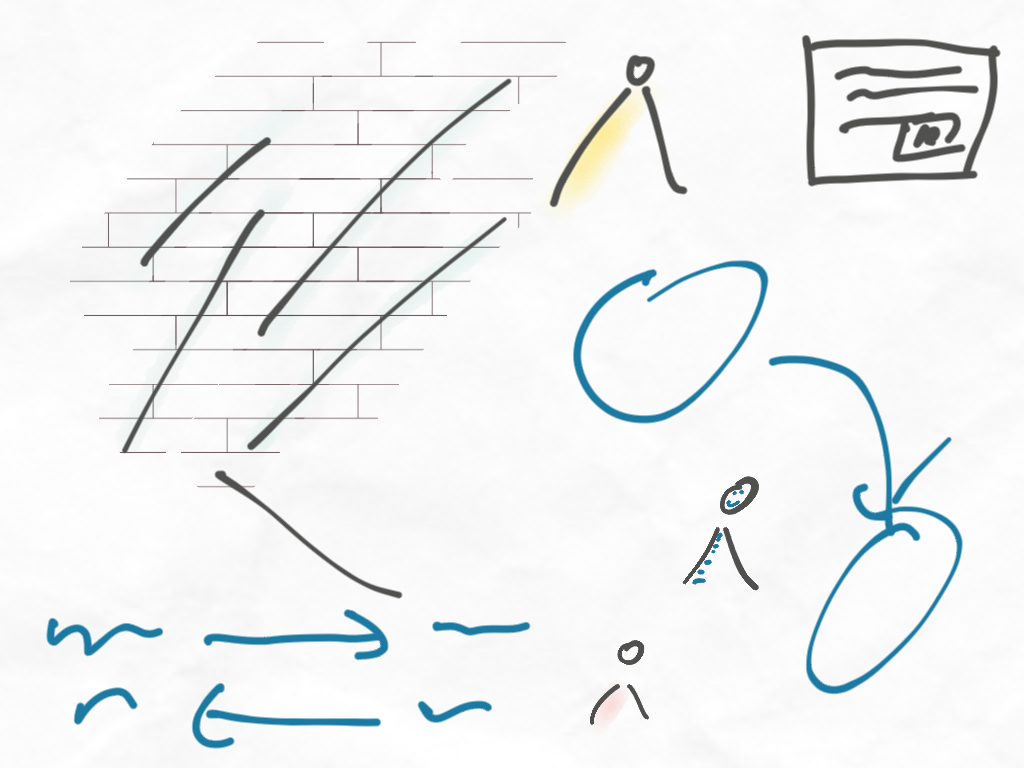Sallyann Freudenberg once asked how do developers communicate during pair programming. Do you talk, draw, or let the code or tests talk?
we often say:
pair programming is a conversation that has working code as a side-effect.
My preferred style seems to be a short conversation at the start of a pairing session, figuring out what needs to be done, and roughly outline how to proceed. Writing tests together will flesh out the real design. That design usually differs slightly from the initial discussion, and sometimes significantly. The fun here is in moulding the design together and finding the minimal way to address the users’ needs. That also may include rethinking features. Like code, the best features are no features, so if we can find a way to address a users’ need while minimizing the number of features, even better.
When the path ahead is clear, the flow of test-fail-run-refactor is smooth. We pair relentlessly.
When it is clear what needs to be done for the user, but not how to implement it, we do a small experiment. This is also known as an architectural spike - Mike Hill has a great introduction to spikes. Sometimes it works to do it in a pair, sometimes not. Different preferences for approaching a problem seem to be most pronounced here.
Experimenting in a pair can then feel like a three-legged race and might not be the fastest and most fun way to proceed. Going off alone for a set amount of time, and coming back with conclusions from the experiment is more fruitful in those circumstances. That gives two perspectives on the same problem that are more independent. To sketch or not to sketch is up to each, on their own then. Sketches can be a good aid to discuss the outcomes.
One way to see what communication mode you miss most, is to try ‘Silent pairing’ - pair work without speaking. Rob and I once tried this remotely, programming with only a shared terminal and a text editor between us. The only thing we were allowed to say was ‘ding!’ to indicate whose turn it was. We used ping-pong pair programming, writing tests and code in turn. It was fascinating to only let the tests do the talking. We were both going in different directions, but figuring out what direction the other had in mind was challenging, and fun.

We do sketch out designs, but do rarely go into great detail. We sketch at the beginning of a significant chunk of work. We sketch design during pair programming when we wonder how to wire things up. Sometimes when we are stuck we do a spontaneous design session with the rest of the team. If there is a team, otherwise we step away from the keyboard, and a sketch will likely come to us when we get back. I have done some of my best work this way.
We talk continuously, preferably with code or a sketch in hand. Often we use boxes and arrows, sometimes loose UML diagrams, e.g. sequence diagrams when we are designing services or have an interaction between objects that we don’t understand well enough just yet. But always loosely, and keeping our minds open to change, because without tests and code we are only speculating.
How do you communicate during programming, and when do you choose which option? Is it different from when you work solo?
